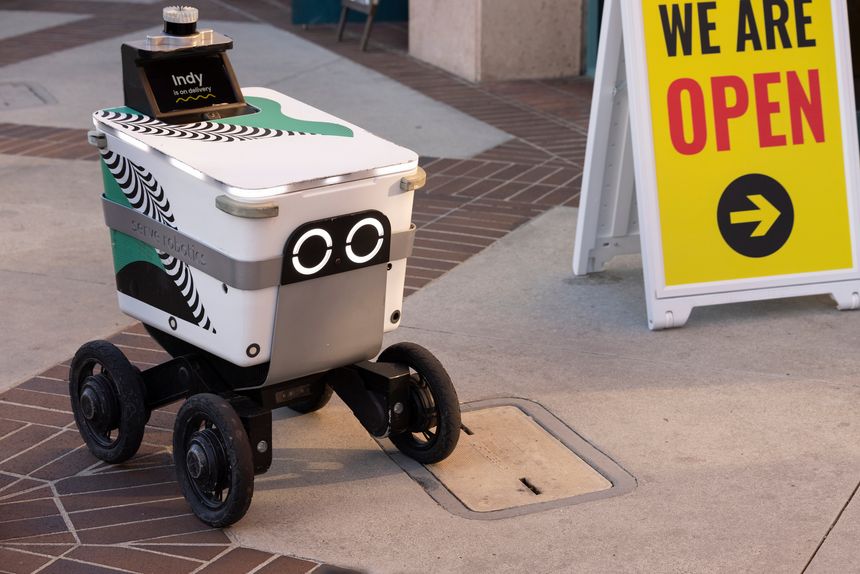Given the number of announcements this year from the likes of Starship, Segway, Ford and FedEx you would be forgiven for feeling surprised and perhaps a little dismayed that as the end of the year draws nearer, our streets are not yet filled with diligent delivery-bots going about their daily business. At least, I'm yet to spot one.
According to Markets and Markets, though, the global delivery robots market is expected to grow significantly over the next few years, from a value of $11.9m in 2018 to $34m by 2024 – a compound annual growth rate of 19.15%.
Projections like these, alongside extensive real-world testing, suggest a bright future for the market, but the real test will be whether our bot colleagues are accepted into the fold. Unlike drones, which travel safely above the ground, most robot delivery services like Serve and Starship travel at commuter level - they may be able to navigate around pedestrians, but are also vulnerable to them. While students held a vigil for a Kiwibot that caught fire in Berkeley and Starship customers are lending bots their coats over on Instagram, not all natural persons are so compassionate when it comes to their robot cohabitants. Remember the "mass destruction" of ride-share bikes, which saw bikes ending up in rivers and trees and companies pulling out of cities, or the spate of smart cars being upturned in the US and tipped into canals in Amsterdam?
Enter anthropomorphism. We know from numerous studies that giving non-human mascots human qualities, like Compare the Market's Aleksandr, the Smash martians or even the Pixar lamp - is a remarkably effective way of building brand loyalty. For delivery companies, it seems, anthropomorphism may also be the key to protecting the bots from ill-intentioned humans. They are given names like Survival, Serve and Roxo, faces, and a semblance of autonomy; animated on their creators' websites, the bots are said to "speak", "make friends" and become "valuable team members"; their faces (sorry, displays) enable them to flash "heart eyes" to woo passers-by. And, while it's not always successful, studies suggest that humans do empathise with robots, a finding clearly demonstrated in the outpouring of affection for delivery bots on social media.
Even Emma Stone's character (something of a misanthrope) was moved to rescue an upturned sanitation bot in in Maniac - why not have a watch of the clip and decide for yourself?



/Passle/5badda5844de890788b571ce/SearchServiceImages/2025-12-19-12-16-27-658-6945421bf50c4cde376da9e9.jpg)
/Passle/5badda5844de890788b571ce/SearchServiceImages/2025-12-11-18-24-43-039-693b0c6b83358cbce8045f47.jpg)
/Passle/5badda5844de890788b571ce/SearchServiceImages/2025-12-10-19-35-06-080-6939cb6aff5faebc0652f25c.jpg)
/Passle/5badda5844de890788b571ce/SearchServiceImages/2025-12-09-16-58-14-441-693855262b43241fe1633236.jpg)